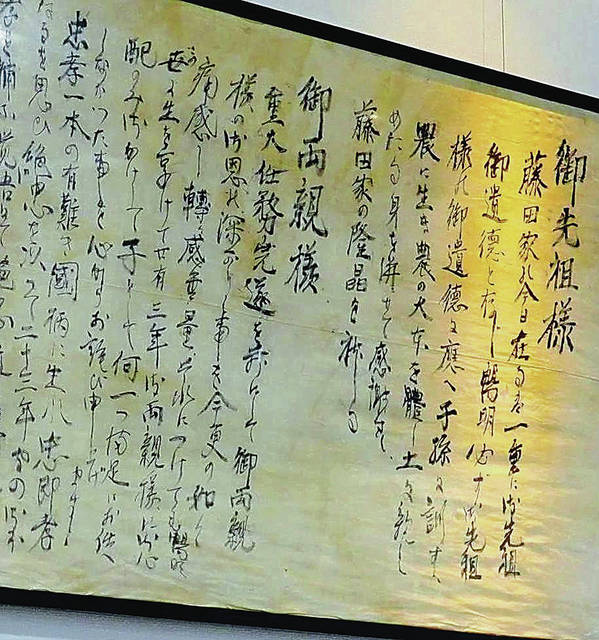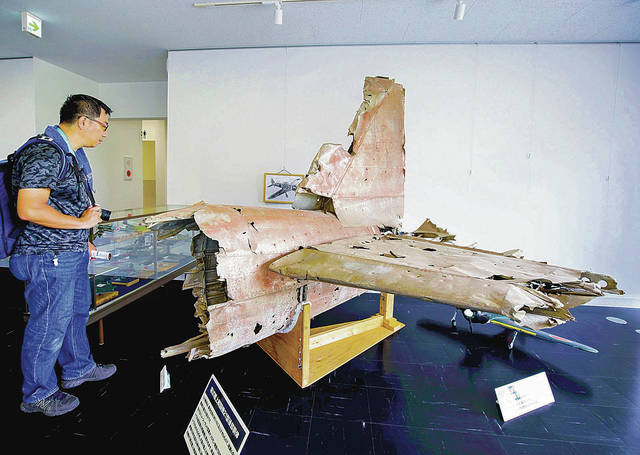War memories, artifacts preserved at Japanese museum

TAKU YAGINUMA PHOTOS FOR THE JAPAN NEWS / YOMIURI
Above, the last will and testament written by a suicide attack squad member, is on display at the museum. It is addressed to his family.

TAKU YAGINUMA PHOTOS FOR THE JAPAN NEWS / YOMIURI
Part of a Zero fighter, recovered by the New Zealand Air Force on the Solomon Islands in the South Pacific, is displayed on the museum’s first floor.


TOKYO >> Kasama, Ibaraki Prefecture, was once home to the Tsukuba Naval Air Corps, which included one of the suicide attack squads that formed at the end of World War II.
Although it served as a school and hospital after the war, the site’s wealth of wartime remains brought it back into the spotlight when it was used as a filming location for “The Eternal Zero.”
Mt. Tsukuba can even be seen from the grounds.
The Tsukuba Naval Air Corps Museum, which has a collection of about 2,000 items donated by former corps members and their families, has about 150 items, including the last wills and testaments written by members of the squad, on display.
The Tsukuba Naval Air Corps was created in 1934 to be the Tomobe branch unit of the Kasumigaura Naval Air Corps. Initially it was a training unit for fighter pilots, but was made an independent air corps in 1938.
After World War II broke out, it became more of an operational unit, receiving deployments of Zero fighters and other aircraft. Many young men left from here on suicide attack missions — from which they never returned.
Don't miss out on what's happening!
Stay in touch with breaking news, as it happens, conveniently in your email inbox. It's FREE!
One of the museum’s most notable displays is the body of a Zero that was recovered in the Solomon Islands in the South Pacific.
Group photos of tense-looking squad members, a will a squad member addressed to his family written on a scarf and other items pull at the heartstrings.
There is much war heritage to see around the museum. Still standing next to the museum are an old command building, drill platform and monument dedicated to corps members who died.
One former corps member who visited the museum was surprised to find that it “hadn’t changed a bit.”
The triangle-shaped runway, unusual at the time, is used as a public road nearby. Visitors are allowed to walk the grounds to see how much things have changed when compared to the aerial photographs on display at the museum.
Nearby are an underground concrete combat information center and emergency clinic, though neither are open to the public.
There is also a 47-inch tunnel that runs for more than 1.25 miles, believed to have been used as an emergency evacuation route.
“One of the great things about the museum’s wartime remains is that you can see the same scenery that the corps members did, which gives you a feel for the atmosphere of the time,” said museum Director Daisuke Kanazawa, 48.



